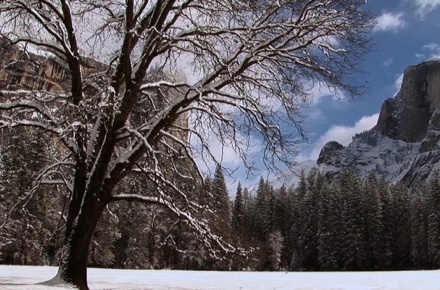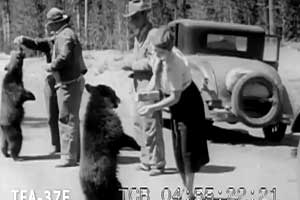Tag: History
-

Yosemite Nature Notes #17: Black Oaks (video)
Don’t miss the newest Yosemite Nature Notes: Black Oaks. Spend a few minutes and enjoy the beauty and history of Yosemite.
-
Happy 197th Birthday Galen Clark
When people say name the most influential person in the creation of Yosemite the National Park almost certainly the first name that comes to mind is John Muir, but there’s a man that even John Muir looked up to for his stewardship of the land and belief that it needed protecting.
-
A Look Back at Yesteryears
I really enjoy getting these old photos from readers about Yosemite. Rick Helin sent me this awesome photo of his grandfather and his great aunt in front of the Wawona Inn back in 1917. Read the story Rick sent along with it.
-

A Bygone Era: Yosemite in the 1940s (video)
Here’s an interesting archive reel from the 1940s of Yosemite National Park. Oh…how different things were back then.
-
Get John Muir’s ‘The Yosemite’ FREE for the iPad
If you couldn’t wait yesterday and ran out to get an iPad first thing when they went on sale then i have a special treat for you. You can get The Yosemite by John Muir or The Indians of Yosemite by Galen Clark free from iBooks. Simply download the iBooks app then go to the…
-
Catch Lee Stetson as John Muir in Yosemite Valley
Lee Stetson portrays John Muir. Photo by Edie Howe-Byrne. So if you can’t make it up to Tuolumne Meadows this weekend don’t worry. There’s still a few more weeks of summer left and that means you can catch Lee Stetson in his awesome portrayal of John Muir in Yosemite Valley. You can catch Lee’s performances…
-
Something To Do This Weekend? Learn About The Life of John Muir
Plan on being in Yosemite this Saturday for a discussion about the life and times of John Muir. Called “A Passion for Nature: The Life of John Muir” the discussion will take place from 2 to 5 p.m. Aug. 22 in the Parsons Memorial Lodge in Tuolumne Meadows as part of a Yosemite National Park…